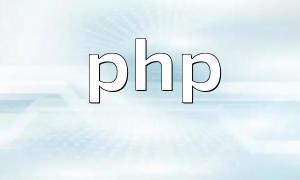After installing an SSL certificate on IIS, first make sure the certificate is properly configured. This includes installing it on the server, setting up the binding information, and ensuring the certificate chain is complete. An incorrect configuration may cause PHP to fail when communicating with the server.
Open the PHP configuration file php.ini and locate the following lines, then make sure they are uncommented:
;extension=php_openssl.dll ;extension=php_curl.dll
Remove the semicolon to enable these two modules. They are necessary for handling SSL connections and HTTPS requests, ensuring PHP can fetch HTTPS data correctly.
When sending HTTPS requests in PHP, make sure to use the correct URL starting with https://. Otherwise, PHP may not recognize it as a secure connection.
<?php
$url = "https://example.com/api/data"; // Replace with the actual HTTPS API endpoint
$ch = curl_init();
curl_setopt($ch, CURLOPT_URL, $url);
curl_setopt($ch, CURLOPT_RETURNTRANSFER, true);
$result = curl_exec($ch);
if(curl_errno($ch)){
echo 'Curl error: ' . curl_error($ch);
}
curl_close($ch);
echo $result;
?>If PHP fails to fetch data, the issue may be due to SSL certificate verification failure. You can enable certificate verification in the cURL request with the following options:
curl_setopt($ch, CURLOPT_SSL_VERIFYPEER, true); curl_setopt($ch, CURLOPT_SSL_VERIFYHOST, 2);
These lines enable SSL certificate verification and hostname validation, preventing data fetch errors caused by untrusted certificates.
By ensuring the SSL certificate is correctly configured, enabling SSL modules in PHP, using the correct HTTPS request URL, and enabling SSL verification, you can effectively solve the problem of PHP failing to fetch data after installing an SSL certificate on IIS. The methods and example code provided help developers quickly identify and resolve related issues.









